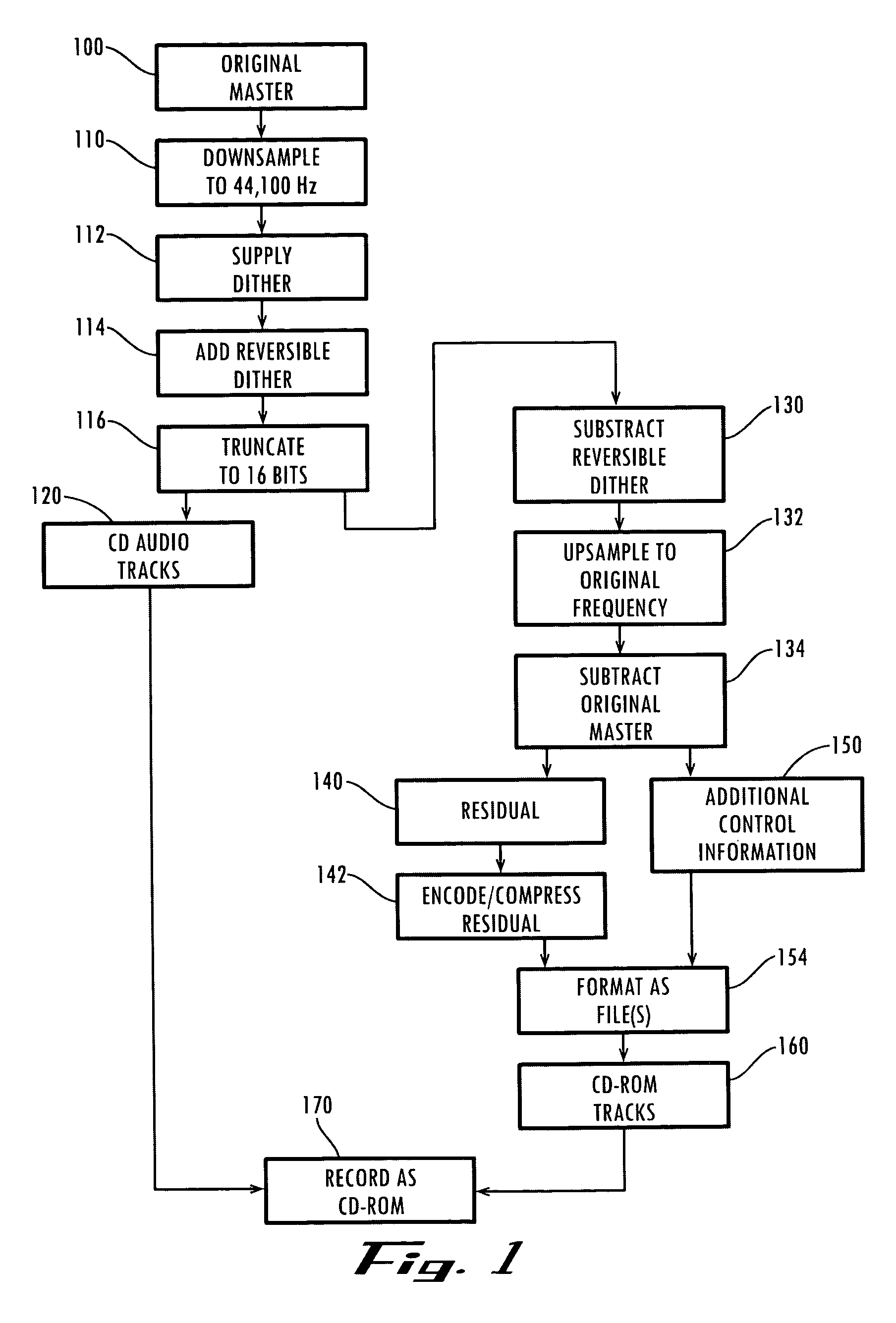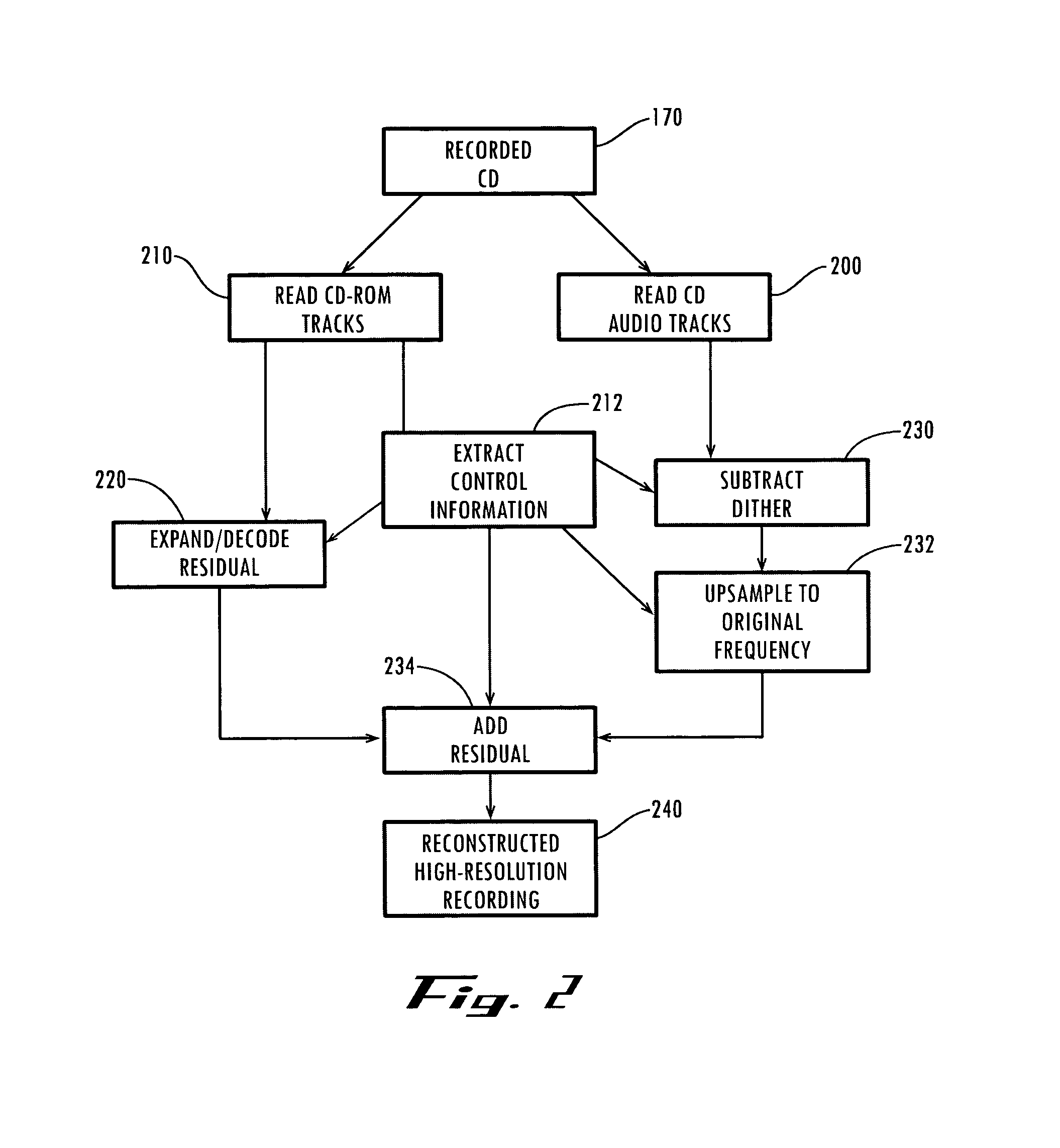CD playback augmentation for higher resolution and multi-channel sound
a multi-channel sound and high-resolution technology, applied in the field of compact disk storage of audio information, can solve the problems of requiring little special handling, requiring no surface noise or wear, and requiring no special handling, etc., to achieve the effect of increasing the resolution, increasing the number of channels, and enhancing the playback of compact disks
- Summary
- Abstract
- Description
- Claims
- Application Information
AI Technical Summary
Benefits of technology
Problems solved by technology
Method used
Image
Examples
Embodiment Construction
[0020]The general context of the invention is that of delivery of music on compact disks. The conventional compact disk (CD) format is a method of distributing digital, stereo music recordings. The present invention augments the standard CD by placing additional information in a CD-ROM track on the same disk. This additional information is read by special software that then reconstructs a recording by combining the additional information with that contained in the conventional audio portion of the disk. In one set of embodiments described below, this results in a multi-channel (surround-sound) recording, while another set of embodiments produce a high-resolution recording. When the CD is played on a standard player, the usual stereo presentation is heard. When the CD is played on an augmented player, or on a PC (personal computer) with special software, the information in the CD-ROM track is combined with the standard stereo audio on the disk to produce high-resolution sound, multi-...
PUM
 Login to View More
Login to View More Abstract
Description
Claims
Application Information
 Login to View More
Login to View More - R&D
- Intellectual Property
- Life Sciences
- Materials
- Tech Scout
- Unparalleled Data Quality
- Higher Quality Content
- 60% Fewer Hallucinations
Browse by: Latest US Patents, China's latest patents, Technical Efficacy Thesaurus, Application Domain, Technology Topic, Popular Technical Reports.
© 2025 PatSnap. All rights reserved.Legal|Privacy policy|Modern Slavery Act Transparency Statement|Sitemap|About US| Contact US: help@patsnap.com



